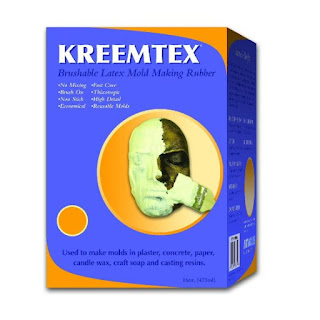The Natural Elasticity of Latex Rubber
Producing Lifecast Masks from Latex
Affordable liquid latex mask formulas have made accessible hyperrealistic masks and makeup effects. Zombie skin, alien faces, and disguise pieces all benefit from the depth of detail yielded by latex life casts. More comfortable than heavy plaster bandages, it is brushed directly onto skin, working into crevices and follicles naturally. A thin cured layer essentially duplicates every rise, wrinkle, and pore after drying into a flexible latex skin. This lightweight, breathable material allows ease in long wear performances, versus stiff plaster or less forgiving materials. The captured contours provide a smooth interior with fine exteriors when worn.
Utilizing Latex in Prop Sculpting and Art
Rubber latex’s durability and flexibility lends well to creating sculptural, wearable, or fabricated props requiring an elastic yet sturdy interface. Moldable padded latex foam is a popular choice. Liquid latex also works as a strengthening paint and a texture and pattern transfer medium. Poured or brushed over finished sculptures, latex micro-coats add tensile support without stiffening. Blanketed over fabric or organic items such as leaves, cured latex preserves and picks up every vein or weave to incorporate realistic natural details in imaginative art and decor pieces. From tree bark to leather, almost any surface pressed into fresh latex captures a faithful impression.
Safe Handling Practices for Working with Latex
Remaining mindful of materials ensures safer latex artistry for the long haul. Though rare with cured materials, those with existing latex sensitivity should test tolerance and take precautions. When pouring or brushing latex, nitrile gloves prevent skin irritation as traces of ammonia release fumes while drying. Working in ventilated areas clears vapors. Once cured, latex poses no inhalation risk. Storing leftover liquid latex properly also retains its lasting quality between projects. Keeping latex air-tight with added preservative prevents premature spoiling or bacteria growth over time. With basic safety practices, latex offers artists a versatile medium for crafting imaginative works in durable realism.
Whether sculpting creature suits or capturing the essence of skin textures, latex puts creative possibilities at artists’ fingertips. Paired with techniques like foam padding and poly-fiber hair punching, latex takes makeup special effects and fantastical sculptures to new levels of realistic dimension. From Halloween masks to Hollywood effects, latex provides a practical balance of affordability, strength, and detail reproduction for artists across mediums and skill levels. With the right handling, it unlocks nearly any creative vision in flexible form.



















